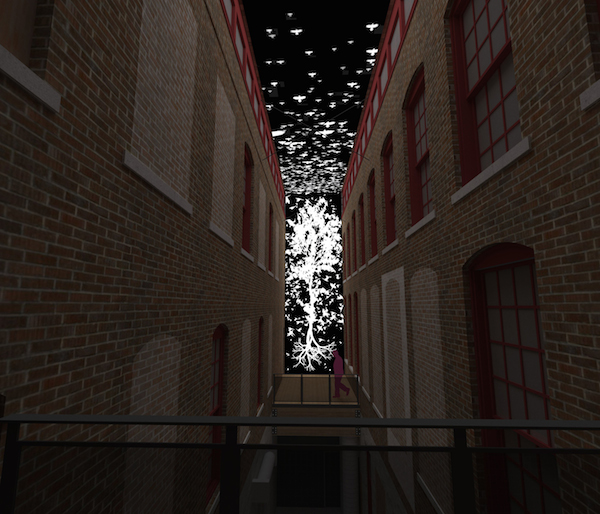 (NORTH ADAMS, Mass.) – Eclipse, a site-specific installation at MASS MoCA on view beginning Saturday, August 9, 2014, evolved from a series of conversations between New Yorker writer Elizabeth Kolbert and artist duo Sayler/Morris (Susannah Sayler and Edward Morris). The exhibition examines species extinction through the passenger pigeon, whose once-massive population disappeared 100 years ago.
(NORTH ADAMS, Mass.) – Eclipse, a site-specific installation at MASS MoCA on view beginning Saturday, August 9, 2014, evolved from a series of conversations between New Yorker writer Elizabeth Kolbert and artist duo Sayler/Morris (Susannah Sayler and Edward Morris). The exhibition examines species extinction through the passenger pigeon, whose once-massive population disappeared 100 years ago.
Eclipse combines video, sound, and text to create an immersive and contemplative exhibition in a newly conceived exhibition space – a dramatic lightwell at the center of the MASS MoCA campus. The exhibition is on view beginning August 9, 2014, with an artist reception at 5:30pm, and officially opens on September 1, 2014, the centenary of the death of the last known passenger pigeon, Martha.
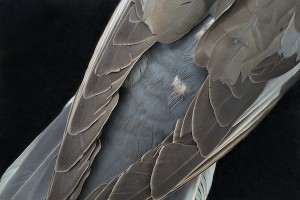 In the mid-19th century, the passenger pigeon – a bird bearing more resemblance to a sleek mourning dove than to the common pigeon of today – flew in flocks of millions across the skies of eastern North America. Their numbers were such that migrating flocks could darken skies for hours. John James Audubon likened their appearance to a noonday eclipse, but the bird rapidly became extinct over the course of several decades at the end of the century.
In the mid-19th century, the passenger pigeon – a bird bearing more resemblance to a sleek mourning dove than to the common pigeon of today – flew in flocks of millions across the skies of eastern North America. Their numbers were such that migrating flocks could darken skies for hours. John James Audubon likened their appearance to a noonday eclipse, but the bird rapidly became extinct over the course of several decades at the end of the century.
The collaboration between Kolbert and Sayler/Morris, each of whom wished to mark an event that lies at the edge of cultural memory and obscurity, is a video installation and related publication that commemorate the anniversary as part of a larger story about extinction that, as Kolbert writes, is “only beginning to unfold.” With extinction rates now “higher than they’ve been at any point since the dinosaurs disappeared sixty-six million years ago,” Kolbert asserts that we are at a watershed moment in the history of our planet.
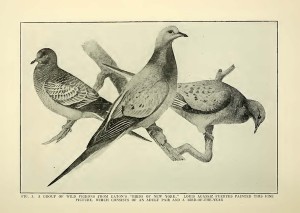 With Eclipse, Sayler/Morris illuminate several aspects of the birds and the story of their extinction: the once overwhelming, even frightening numbers of passenger pigeons; the delicate beauty of the individual birds contrasted with their odious nature in large numbers; and the sadness of their complete and irreversible disappearance.
With Eclipse, Sayler/Morris illuminate several aspects of the birds and the story of their extinction: the once overwhelming, even frightening numbers of passenger pigeons; the delicate beauty of the individual birds contrasted with their odious nature in large numbers; and the sadness of their complete and irreversible disappearance.
Eclipse consists of a massive 100-foot video projection, which screens on the walls and ceiling of MASS MoCA’s four-story atrium. The video loop shows a flock of passenger pigeons in reverse-negative silhouette lifting out of a life-sized tree, accompanied by sound design consisting of layers of digitally processed human voices. The exhibition offers a space for reflection with a limited-edition artist publication that will include writings by Kolbert, original photography by Sayler/Morris, and archival images.
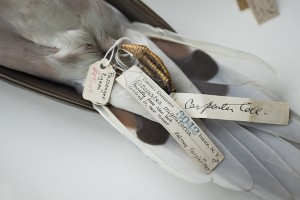 Sayler/Morris work with photography, video, writing, and installations that explore contemporary efforts to develop an ecological consciousness. They are also co-founders of The Canary Project, an organization that produces art and media that seek to deepen public understanding of the Anthropocene. Sayler/Morris were recently named Artist Research Fellows at the Smithsonian Institute and Research Fellows at the Nevada Museum of Art and were Loeb Fellows at the Harvard Graduate School of Design. Their work has been exhibited widely in museums and galleries in the U.S. and abroad.
Sayler/Morris work with photography, video, writing, and installations that explore contemporary efforts to develop an ecological consciousness. They are also co-founders of The Canary Project, an organization that produces art and media that seek to deepen public understanding of the Anthropocene. Sayler/Morris were recently named Artist Research Fellows at the Smithsonian Institute and Research Fellows at the Nevada Museum of Art and were Loeb Fellows at the Harvard Graduate School of Design. Their work has been exhibited widely in museums and galleries in the U.S. and abroad.
Elizabeth Kolbert is the author of the seminal book on climate change, “Field Notes from a Catastrophe,” and the recently published “The Sixth Extinction,” as well as numerous articles on these topics in the New Yorker, for which she is a staff writer.
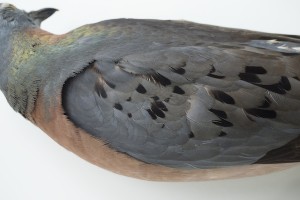 This exhibition is supported by the Anna-Maria and Stephen Kellen Foundation and Eric and Stacy Cochran, with additional funding provided by Lightwork Endowment, Syracuse University College of Visual and Performing Arts, The Foundation for Contemporary Arts, The Compton Foundation, and Barbara E. Bund.
This exhibition is supported by the Anna-Maria and Stephen Kellen Foundation and Eric and Stacy Cochran, with additional funding provided by Lightwork Endowment, Syracuse University College of Visual and Performing Arts, The Foundation for Contemporary Arts, The Compton Foundation, and Barbara E. Bund.
MASS MoCA is one of the world’s liveliest (and largest) centers for making and enjoying the best new art of our time, across all media: music, art, dance, theater, film, and video. Hundreds of works of visual and performing art have been created on its 19th-century factory campus during fabrication and rehearsal residencies in North Adams, making MASS MoCA among the most fertile sites in the country for the creation and presentation of new art. More platform than box, MASS MoCA strives to bring to its audiences art and shared learning experiences that are fresh, engaging, and transformative.
Through September 1, 2014, MASS MoCA’s galleries are open 10am to 6pm every day, Sundays through Wednesdays, with extended evening hours to 7pm on Thursdays through Saturdays, when performing arts events are often featured. In non-summer months, MASS MoCA’s galleries are open 11am to 5pm every day except Tuesdays. The Hall Art Foundation’s Anselm Kiefer exhibition is open seasonally, spring – fall. Gallery admission is $18 for adults, $16 for veterans and seniors, $12 for students, $6 for children 6 to 16, and free for children 5 and under. Members are admitted free year-round. For additional information, call 413.662.2111 x1 or visit MASS MoCA.
